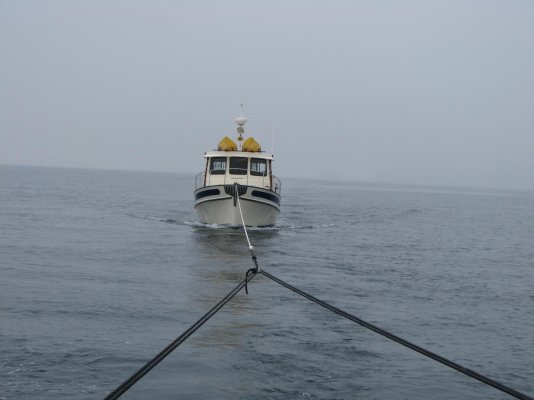Montenido
Senior Member
- Joined
- Dec 3, 2014
- Messages
- 381
- Location
- Mexico
- Vessel Name
- Ansedonia
- Vessel Make
- Californian/Carver 52CPMY
Hi folks,
I am new to power boating and so I have lots of questions. Today's questions involve towing another vessel. Where do you attach the tow line or bridle on your own boat? I have hawseholes on each stern quarter that lead to cleats. Would this be strong enough to tow another vessel? I would hate to rip out my cleats.
Second question would be at what speed would you tow a vessel similar in size to your own, in calm conditions?
Thanks, I just figure I should have an idea about this before the need arises, if ever.
Cheers, Bill
I am new to power boating and so I have lots of questions. Today's questions involve towing another vessel. Where do you attach the tow line or bridle on your own boat? I have hawseholes on each stern quarter that lead to cleats. Would this be strong enough to tow another vessel? I would hate to rip out my cleats.
Second question would be at what speed would you tow a vessel similar in size to your own, in calm conditions?
Thanks, I just figure I should have an idea about this before the need arises, if ever.
Cheers, Bill




